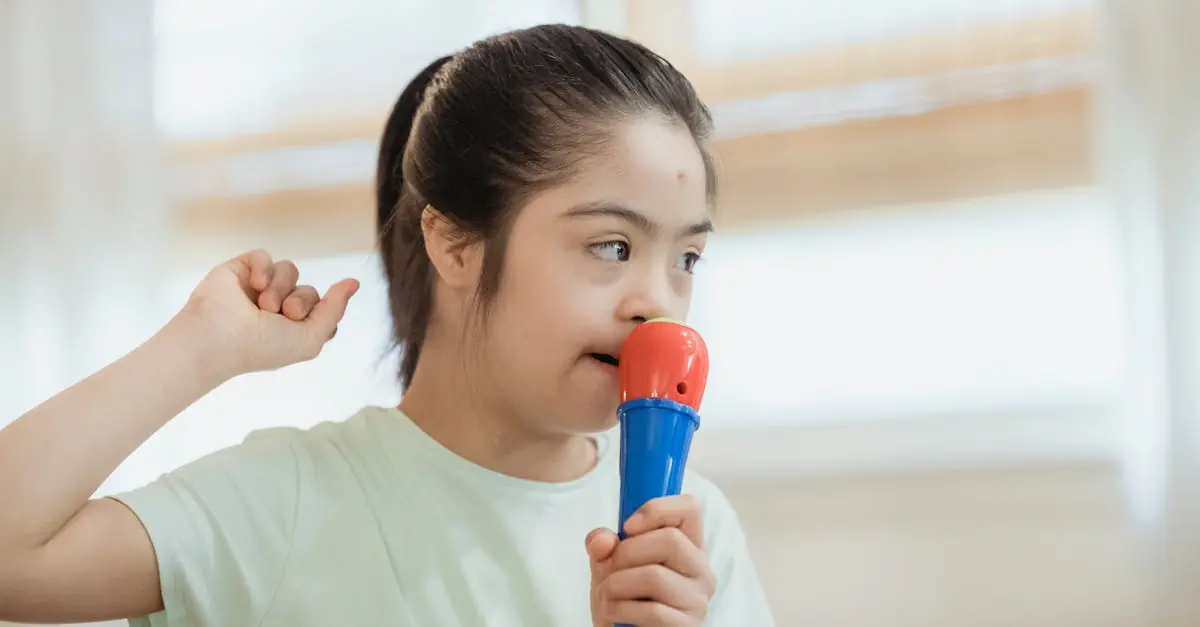In the world of care homes, activities aren’t just a way to pass the time; they’re the secret sauce that spices up daily life. Imagine a place where bingo isn’t just a game, but a fierce competition that gets everyone’s adrenaline pumping. From arts and crafts to dance-offs that would make even the most seasoned dancers blush, care home activities offer something for everyone.
Table of Contents
ToggleOverview of Care Home Activities
Care home activities significantly enhance the quality of life for residents. Engaging in organized events not only promotes social interaction but also fosters a sense of community among individuals. Games such as bingo create friendly competition, bringing excitement to daily routines.
Arts and crafts sessions offer creative outlets for self-expression. Through painting or pottery, residents can explore their artistic talents at their own pace. Dance-offs encourage physical movement while uplifting spirits and generating laughter.
Various options exist to cater to varied interests and abilities. Gardening activities allow residents to enjoy nature while nurturing plants. Regular exercise classes promote physical health, targeting mobility and strength improvements.
Additionally, themed events provide fun and enriching experiences. Movie nights, for example, create opportunities for socializing and enjoying shared interests. Music sessions often involve singing and playing instruments, which can stimulate memories and encourage participation.
Crafting personalized activities fosters individual involvement. Residents may express preferences, allowing facilities to create tailored schedules. Recreational outings to local parks or museums introduce new environments and experiences, encouraging exploration.
Regular feedback from residents shapes programming effectively. Staff members observe participation and satisfaction levels, adapting activities to meet evolving needs. Consistent updates ensure that programs remain relevant and engaging, meeting the diverse requirements of residents.
Ultimately, the right mix of care home activities nurtures connection and enjoyment among residents. Prioritizing resident involvement cultivates a vibrant, supportive atmosphere. Maintaining enthusiasm for these initiatives has a lasting impact on residents’ overall well-being.
Importance of Engaging Activities
Engaging activities are vital for enhancing the daily lives of care home residents. They contribute significantly to overall well-being, promoting both physical and mental health.
Physical Health Benefits
Participating in engaging activities encourages physical movement, which directly benefits cardiovascular health. Residents who join exercise classes or gardening improve their strength and flexibility. Activities can also help maintain balance, reducing the risk of falls. Structured fitness programs cater to various fitness levels, ensuring everyone can participate. Engaging in activities offers socialization opportunities, further motivating individuals to stay active. Regular participation leads to better endurance and stamina among residents.
Mental Health Benefits
Engaging activities play a crucial role in promoting mental well-being. Residents experience reduced feelings of isolation when they participate in group events. Interaction with peers fosters a sense of belonging, essential for emotional health. Activities that stimulate cognitive functions, like puzzles and arts and crafts, can enhance memory and focus. Regular engagement in enjoyable tasks leads to increased happiness and reduced symptoms of anxiety and depression. Furthermore, tailored activities based on resident interests ensure they remain stimulated and mentally active.
Types of Care Home Activities
Care home activities come in various forms, catering to the diverse interests of residents. These activities not only provide enjoyment but also enhance social interaction and overall well-being.
Social Activities
Social activities promote connection among residents. Group games encourage teamwork, while organized events like holiday parties create a sense of community. Bingo nights often attract competitive spirits, making them popular choices. Residents can engage in discussion groups or book clubs, fostering meaningful conversations. These activities support emotional well-being and combat feelings of loneliness.
Recreational Activities
Recreational activities focus on enjoyment and leisure. Exercise classes build strength and flexibility, helping maintain physical health. Gardening offers a peaceful outdoor experience, allowing residents to connect with nature. Arts and crafts sessions encourage creativity, while dance-offs provide fun and active engagement. Each activity reinforces physical movement and encourages active participation.
Educational Activities
Educational activities stimulate cognitive functions and encourage lifelong learning. Language classes offer opportunities for residents to learn new skills or improve existing ones. Workshops focused on technology help residents stay connected with family and friends. Guest speakers often share knowledge about various topics, sparking interest and discussions. These engaging experiences contribute to mental stimulation and overall happiness.
Therapeutic Activities
Therapeutic activities promote health and well-being through structured engagement. Music therapy helps evoke memories and emotional responses, providing comfort. Pet therapy allows residents to interact with animals, enhancing mood and reducing anxiety. Art therapy encourages self-expression and emotional exploration, benefiting mental health. Such activities not only reduce feelings of isolation but also nurture a supportive environment for residents.
Implementing Care Home Activities
Implementing effective care home activities involves understanding resident preferences and ensuring staff engagement. Care homes can create vibrant environments through tailored programs that cater to the unique interests of residents.
Assessing Resident Interests
Assessing resident interests starts with individual conversations. Gathering feedback through surveys or informal chats reveals preferences for various activities. Residents may enjoy art, music, or gardening, so knowing their specific likes shapes programming effectively. Observation also plays a key role; staff can note engagement levels during activities to refine choices. Offering trial sessions encourages residents to explore new options while expressing personal tastes. A regular review of these assessments ensures activities remain relevant and engaging, promoting participation and satisfaction.
Staff Training and Involvement
Staff training and involvement are crucial for successful activity implementation. Equipping caregivers with knowledge about diverse activities allows them to facilitate engaging experiences confidently. Workshops that focus on activity planning and resident engagement enhance staff skills. Encouraging staff to share their ideas fosters a collaborative environment that values input. Involving staff in planning processes ensures they remain invested in the success of activities. Regular discussion forums allow team members to evaluate what works well and identify areas for improvement, ultimately benefiting resident well-being.
Care home activities are essential for fostering a vibrant community among residents. By offering a diverse range of options tailored to individual preferences, these activities enhance both physical and mental well-being. Engaging in social interactions and recreational pursuits not only combats feelings of isolation but also promotes overall happiness.
The thoughtful implementation of programs ensures that residents remain active and connected. With regular feedback and staff involvement, care homes can create an environment where residents thrive. Ultimately, prioritizing meaningful activities cultivates a supportive atmosphere that enriches daily life and nurtures lasting connections among residents.




